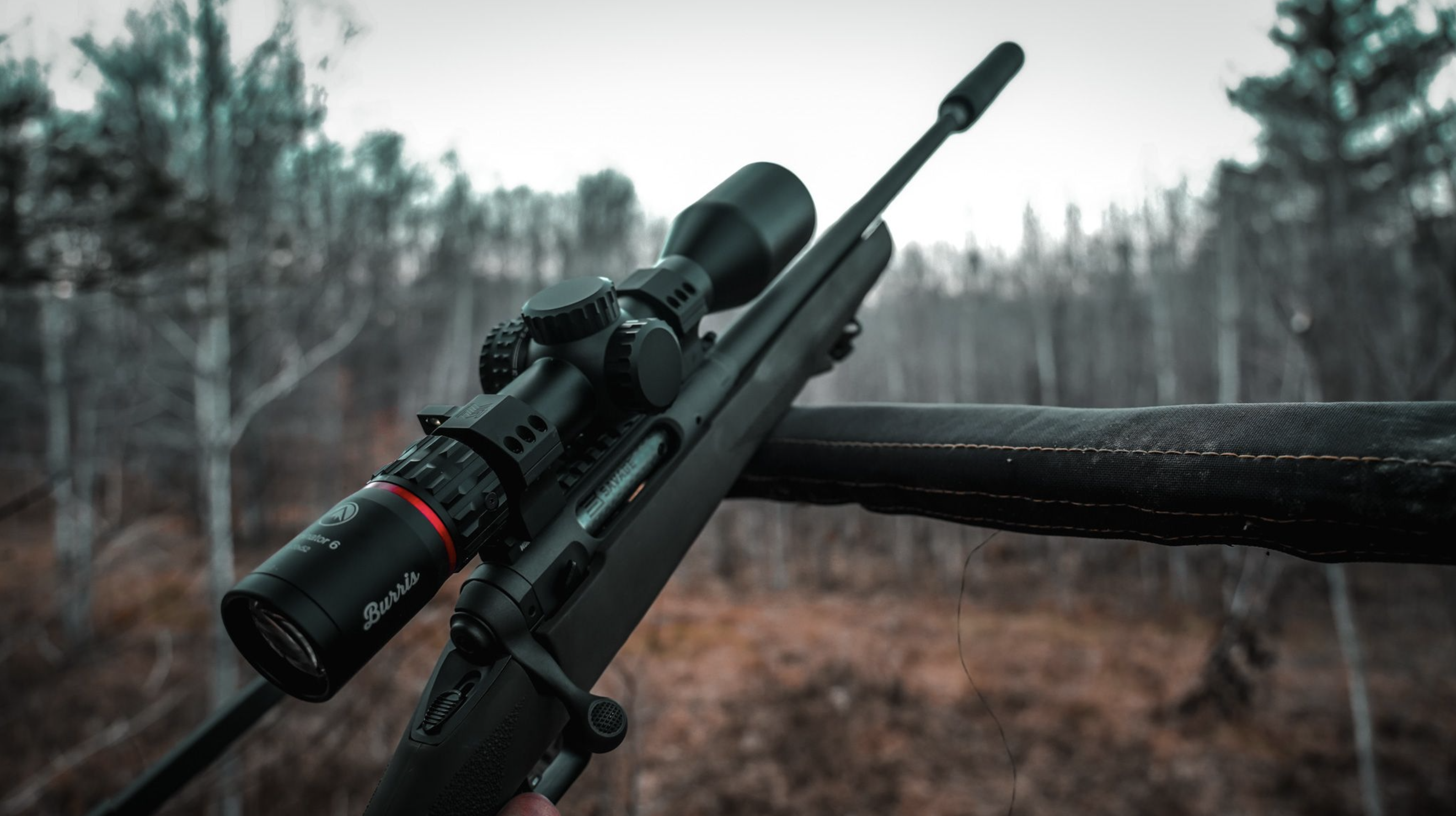
This fall, we once again celebrated what is considered a national holiday here in Michigan: the opening day of rifle deer season. Every year on November 15th, the “orange army” heads out into the woods, signifying the end of archery season and the beginning of the traditional “deer camp.” We are no different than most and enjoy a very comfortable wall-tent camp in the Michigan north woods. Time-honored traditions are carried out year after year, and November 15th will always be the holy grail for those of us who grew up in Michigan chasing whitetails.
This year, we were greeted with warm temperatures, a full moon—probably the largest I have ever seen—and some lingering rut activity. All of this made for some of the most challenging hunting conditions I’ve ever encountered in Michigan. There was plenty of chasing happening, but it was all occurring at night under the safety of the full moon, with absolutely zero daytime movement.
Traditionally, Michigan is very much a “sit and wait” state, whether you’re in a tree stand or one of the many customized, comfortable shooting houses that have been in the same spot for decades and always seem to produce a buck. This year, however, we had to get creative and adapt to the conditions we were dealt. That’s where a tool like the Burris Eliminator 6 comes in handy.
If you’re not familiar with the Eliminator line of scopes, first and foremost, you should be! But for the sake of time, I’ll give you the 30,000-foot view: The Eliminator scopes are equipped with built-in rangefinding technology. With the push of a button, you get bullet drop information at various yardages for just about every caliber and ammunition combination. That’s the simplified version; the amount of technology and capability packed into the latest version—the Eliminator 6—is incredible. I could go on for hours about all of it, but I want to stick to the scope’s practical application.
If you’re already familiar with—or are just now researching—this scope, you may have initially thought, “Oh, that seems like an out-West, long-range type of scope.” You’d be correct that it’s great for long-range applications, but don’t pigeonhole the Eliminator by thinking it’s only for long-range shooting.
In Michigan, we have what we call the “rifle line.” Below this line, in more densely populated areas, you’re restricted to shotguns, muzzleloaders, or, more recently, straight-wall handgun cartridges that have an overall case length of less than 1.8 inches. This led to the rise in popularity of rounds like the 350 Legend, 360 Buckhammer, 400 Legend, and my personal favorite, the 450 Bushmaster. These straight-wall cartridges come with some pretty aggressive ballistic curves, which are very different from what proficient shooters might be used to. Take the 450 Bushmaster, for example: it packs a mean punch and is very capable out to several hundred yards, but the drop at the end of its ballistic curve can be dramatic. This is where the Eliminator 6 steps in and becomes a very practical tool for a cartridge that no one would consider a long-range caliber. With a simple push of a button, the Eliminator 6 tells you your holdover at any yardage. One of its best features is a “Shoot” or “No Shoot” indicator. The scope determines if you have enough energy downrange at longer distances and instantly tells you whether taking that shot is ethical. For example, while I am personally comfortable shooting at 400 yards, I would never take that shot at an animal with a 450 Bushmaster. The scope reinforces this decision by indicating that it’s not an ethical shot.


Back to practical application in the field: Because of all the curveballs we faced this opening day in Michigan, we had to get creative. The long days of sitting comfortably in a heated blind were over, and we had to get mobile. Our best tactic was to still-hunt for the better part of the day, slowly working our way through the whitetail woods. This is where the Eliminator 6 shines—especially when paired with a 450 Bushmaster. We would be covering dense, thick swamps and bedding areas where shots would be up close and personal. But we would also be covering very large clearcuts, power lines, and ridge tops where you can see for several hundred yards. No matter how good you are at still-hunting, if you see a deer, it’s likely going to be on high alert.
When sitting stationary in a blind, you likely have the distance to every visible tree memorized. You have plenty of time to range various points while you’re sitting there all day. But when still-hunting, you never know when, where, or how far away you’ll see a deer. With the ability to raise your rifle, find the deer in the scope, and hit the range button, you’ve instantly calculated a ton of variables. In the past, trying to do this mentally would have likely given the deer time to spook. Now, you can focus more on the deer and the shot itself, rather than factoring in a host of external variables.
In summary, the Burris Eliminator is truly a do-all scope. Don’t think of it as just a long-range tool for hunters out West. I can assure you it’s also a very useful tool in the deep, thick cedar swamps of Michigan. I highly recommend checking it out for yourself—you’ll quickly see that there are plenty of practical applications for such an advanced piece of technology. For more information on the Burris Eliminator 6, head on over to www.burrisoptics.com.


